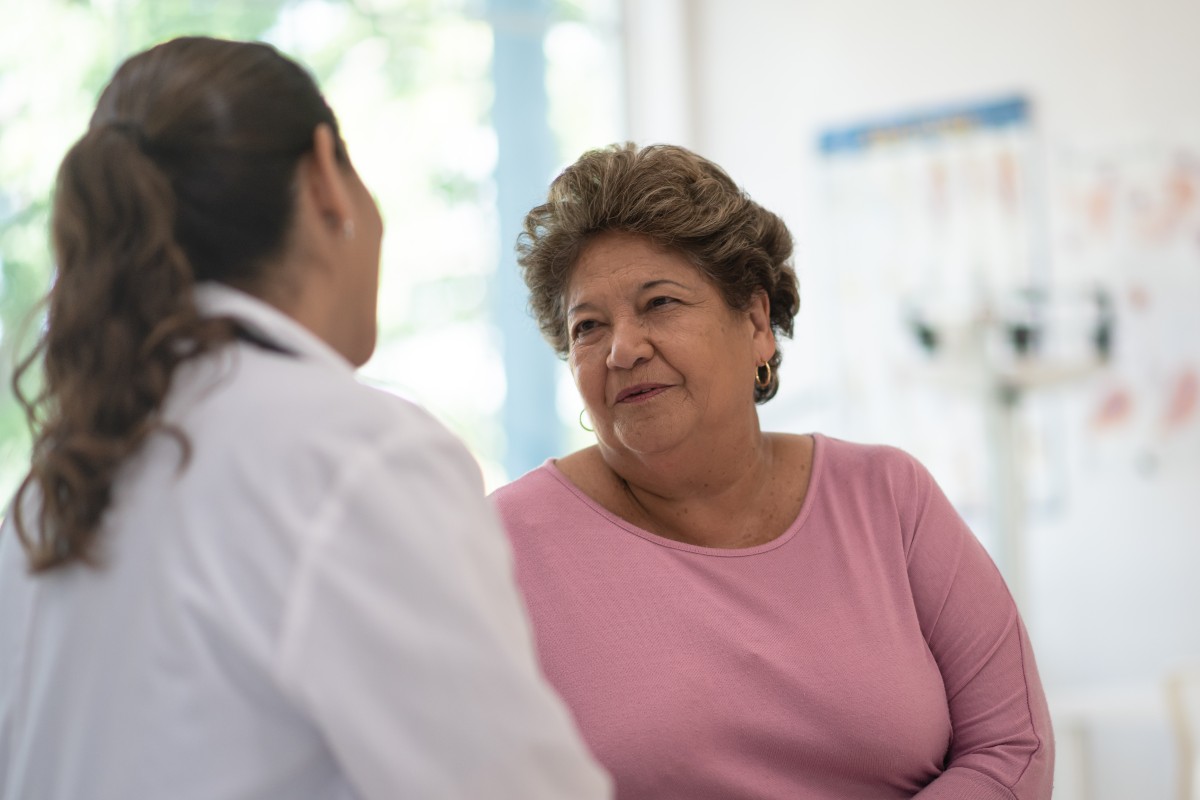A bulging sensation in your vagina is a good indicator that you might have pelvic organ prolapse (POP) –– a common yet under-discussed condition.
POP occurs when pelvic organs –– such as the bladder, uterus, rectum or small intestine –– drop or press against the vaginal walls due to weakened pelvic floor muscles and loss of support.
Although nearly 40% of women are affected by POP globally, many are too embarrassed to bring it up with a provider and go untreated.
If you’re experiencing symptoms of POP, know that it’s a common part of aging or childbirth. It’s a treatable condition that needs medical attention.
“Patients don’t have to live with uncomfortable bulging, urinary urgency or incontinence. There are many treatments available that can help patients return to a full, active life,” says Matthew Tompkins, M.D., a board-certified urogynecologist with Riverside Urogynecology Specialists, who specializes in female pelvic medicine and reconstructive surgery.
What is pelvic organ prolapse?
Pelvic organ prolapse is a pelvic floor disorder caused by weakness and injury of the pelvic muscles and supporting ligaments. When the pelvic floor muscles are too weak to support internal organs, the uterus, bladder or rectum may drop into the vaginal cavity. This causes symptoms such as discomfort or pressure in the vagina. Some women with POP experience bladder or bowel control difficulties due to POP.
Pelvic organ prolapse is categorized by the affected organ:
Anterior: The bladder bulges into the vagina’s front wall.
Posterior: The rectum presses against the vagina’s back wall.
Uterine: The uterus descends into the vaginal canal.
Vaginal vault: Vaginal walls that weaken after a hysterectomy and cause a bulge.
Many women avoid seeking treatment due to shame or discomfort in discussing intimate topics with doctors.
Causes and risk factors of pelvic organ prolapse
The primary risk factor for POP is childbirth. In one study, 40% of women between the ages of 45-85 showed clinical signs of the condition. Other risk factors for pelvic organ prolapse include:
- Age
- Menopause
- Chronic constipation
- Chronic cough
- Obesity
- Smoking
- Family history of POP
- Previous hysterectomy or pelvic surgery
Lifestyle modifications, such as maintaining a healthy weight and eating a high-fiber diet to prevent constipation, can reduce the risk of POP. Avoid heavy lifting if you think you have POP, as this can worsen the condition.
While lifestyle modifications can help, most women need medical treatment for POP.
Symptoms and diagnosis of pelvic organ prolapse
Besides a sensation of bulging or heaviness in the pelvic area, women with pelvic organ prolapse may experience vaginal pressure or pain that worsens with standing or walking. Speak to your doctor if you experience symptoms of pelvic organ prolapse such as:
- Vaginal bulging, pressure or protrusion
- A feeling like something is “falling” in your vagina
- Urinary incontinence or leakage
- Urgency with peeing
- Difficulty with bowel movements
If symptoms affect your daily life, it’s time to seek treatment from a healthcare provider. Your doctor will get a thorough health history and do a pelvic exam. Depending on the severity of the condition, your doctor may refer you to a urogynecologist specializing in pelvic floor disorders.
“Many women are hesitant to discuss their symptoms and may not realize there are numerous non-invasive, safe and effective treatment options available,” says Dr. Tompkins.
Treatment options for pelvic organ prolapse
Healthcare providers typically offer noninvasive treatments for POP, such as pelvic floor physical therapy, bladder training or Kegel exercises. They may also recommend a pessary, which is a removable silicon device inserted into the vagina to hold the organs in place.
Your urogynecologist will discuss non-invasive options first, which may include lifestyle and diet modifications, exercises, pelvic floor physical therapy or a pessary device. If surgery is necessary, most options are minimally invasive vaginal or robotic surgeries that can help patients get back to doing the activities they enjoy.
If your condition is not resolved with lifestyle modifications or noninvasive treatment, surgery may be necessary. There are two types of surgery for POP:
- Reconstructive, which restores the organs to their original position
- Obliterative, where the vagina is narrowed to block organs from dropping further
After surgery, you’ll typically need to rest and avoid strenuous activity, including sex, for a few weeks. Physical therapy or targeted exercises may aid recovery but consult your doctor before exercising after surgery. There is a chance pelvic organ prolapse can recur after surgery, so avoiding heavy lifting, straining and chronic coughing are important even after the recovery period.
It’s important to see a doctor early to prevent the worsening of POP and begin treatment. To make an appointment with Riverside Urogynecology Specialists, call 757-782-6450 or visit riversideonline.com/urogynecology.



